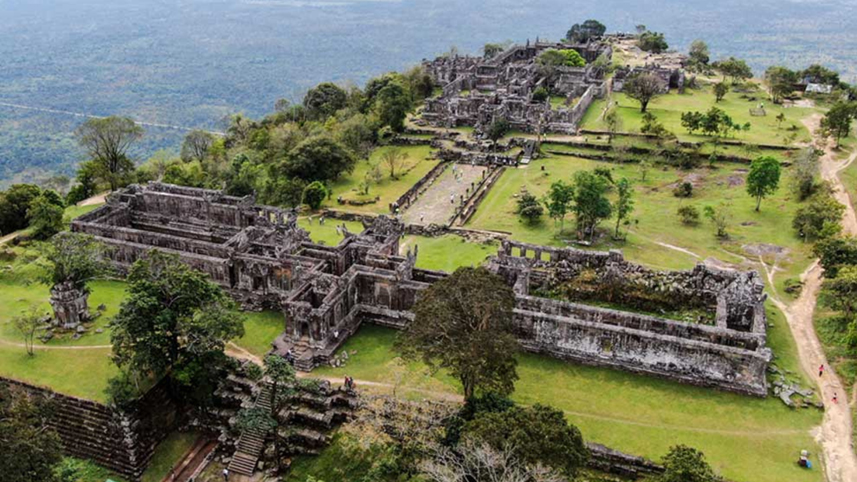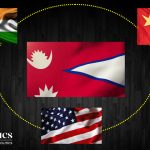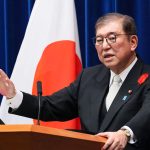The recent dispute between Thailand and Cambodia over the border has opened many flood-gates which has necessitated deeper analysis. The dispute has not been limited to clashes between armed forces of Thailand and Cambodia and has resulted in a political conundrum which led to the suspension of Thailand Prime Minister Paetongtarn Shinawatra from office on July 1.
The nature and cause of dispute
Tensions along the border have been simmering since the start of this year. In February 2025, Cambodian troops and civilians climbed the ruins of a disputed Khmer-Empire Era temple, Prasat Ta Muen Thom and sang the Cambodian National Anthem. This led to a brief altercation between the two forces.
Looking into the historical times, the initial establishment of boundaries between Thailand and Cambodia were a result of the Franco-Siamese Treaty of 1904 and 1907, which spans over 817 Km. As both the states are Buddhist majority and share a rich cultural history, the overlapping claims are notably in the case of cultural heritage and historical sites. For instance, one area of contention centres around the 1000 year- old Preah Vihear Temple. Much of Cambodia’s mapping was done by the French colonizer from 1863 to 1953. As a result of this mapping, the Preah Vihear Temple was included in Cambodian territory, to which Thailand has continued to raise objections.
In 1962, the International Court of Justice awarded sovereignty to Cambodia and the ruling has continued to be an irritant between Thailand and Cambodia. In 2011, following clashes between the Cambodian and Thailand forces which killed 20 and displaced thousands of people along the border. Then again the court reaffirmed its ruling in 2013. However, ruling had favoured Cambodia for the temple and 1 sq. km area around the temple but 4.6 sq. km still remains a contested territory.
Nevertheless, following a series of tit-for-tat escalation post the February altercation among both sides, gunfire erupted on the border on 28 May, killing one Cambodian soldier. The level of escalation increased on July 24, when Thailand launched airstrikes against Cambodian military targets along their long disputed border. The strikes came in the aftermath after a Thai soldier lost his leg due to a landmine explosion along the border. The Thai counterpart had accused Cambodia of launching a strike on civilian infrastructure.
The casualties from the strike stood at 12 which included 11 civilians and one soldier. This has also resulted in the displacement of thousands of civilians along the border.
It is often observed that cartographic differences among states often continue to act as an active agent in reigniting disputes. And in this case, it has been additionally stipulated by religious and nationalist sentiments.
There is yet another aspect. The Thailand forces started to increase its presence along the border following its crackdown against cross-border scam centres. Given the fact that ever since the Myanmar crisis unfolded (military coup in February 2021) it has witnessed a surge in transnational criminality. The crackdown on these scam centres followed both along the Myanmar-Thailand border and the Thailand-Cambodia border as well. The latter has manifolded at a time when security dynamics has changed between the two.
Apart from the unresolved border issue, both the states also have 26,000 square-kilometre overlapping maritime claims over the Gulf of Thailand. The resolution of maritime claims started way back in 1979. the disagreement concerning certain areas of overlapping maritime claims and contestation over natural resources is continuing despite the signing of Memorandum of Understanding in 2001.
Fragile Political Calculus in Thailand
The leaked telephone conversation between Paetongtarn Shinawatra’s leaked phone call between her and former Cambodian Prime Minister Hun Sen on 15 June had sparked debates and reaction among the policy makers and general public. In the leaked conversation, Paetongtarn had criticized the local military and had sought uncle Hun Sen’s help deescalate the ongoing dispute. Although, after this episode Paetongtarn had claimed that it was negotiating tactic used by her for de-escalation but Hun Sen had clear incentive behind the leakage of the conversation, given the fact that Cambodia is a weak country and exploiting the fragile dynamics between Thailand’s civilian government and military forces would serve its purpose. In addition, ever since the reignition of the dispute between Thailand and Cambodian forces, the Cambodian Prime Minister has time and again issued statements that they are going to seek resolution again from the International Court of Justice, after its successes in 1969 and 2013. If the fragile political dynamics continues in Thailand, it will be tough for Thailand to convince Cambodia for resorting to bilateral negotiation.
On June 19, the Bhumjaithai Party which was a coalition partner of the Shinawatra’s Pheu Thai Party withdrew its support from its coalition by taking 69-MPs.
Nevertheless, on June 20, Mongkol Surasajja (President of the Senate) submitted a formal petition to both the National Anti-Corruption Commission (NACC) and the Constitutional Court. The petition suggested that Paetongtarn’s actions may constitute a serious violation of the constitution and ethical standards. In total, the case was brought by 36 lawmakers. Following this, the Constitutional Court had suspended Paetongtarn on July 1. Following this incident, the Thai Cabinet had appointed Phumtham Wechayachai as the acting Prime Minister.
Based on the recent developments regarding the same, suspended Paetongtarn Shinawatra answered questions and underwent cross-examination in an in-camera testimony at the Constitutional Court. Paetongtarn declined to answer media questions after the court barred witnesses from discussing the case on national security grounds. The court is scheduled to deliver its ruling on Aug. 29.
Ceasefire Agreement
In regard to ceasefire, Thailand and Cambodia have agreed to an “unconditional ceasefire” at the end of the peace talks in Malaysia on July 28. During the talk observers from the U.S. and China were present. It was under pressure from the U.S. President Donald Trump who threatened to stop talks over trade tariffs that compelled both Thailand and Cambodia to call for a ceasefire.
This was followed by a series of talks involving defence official from Malaysia, Thailand and Cambodia. Under the ASEAN-facilitated ceasefire agreement reached by both sides after a meeting of the General Border Committee (GBC) in Malaysia on August 7, both Thailand and Cambodia had agreed to take non-provocative actions that would control escalation. They have also agreed to refrain from disseminating false information and to comply with humanitarian law. Also, bot sides would maintain regular communications between local military commanders and senior officials.
This is a positive development given the limitations of ASEAN. The Treaty of Amity and Cooperation (TAC) which embodies universal principle of coexistence and friendly cooperation- also includes a High Council design for mediation, conciliation and inquiry. Although this mechanism has failed to yield any concrete result in regard to Myanmar’s crisis, the ASEAN chair led by Malaysia has taken a proactive stand to control escalation between Thailand and Cambodia.
Nevertheless, despite of the signing of the ceasefire agreement, landmine explosions on July 16 and 23, and August 9 and 12 left many Thai soldiers injured. Thailand have raised concerns and have protested against these incidents but despite the fact that Thailand and Cambodia being parties to the Ottawa Convention of 1999; a complete landmine clearance has been slow due to extensive contamination in remote and contested border areas, recurring security tensions and resource and technical constraints.
Given an overall picture of this dispute, it can be comprehended in three points.
- Firstly, the presence of intangible issues has complicated and prolonged the dispute.
- Second, if the political instability continues in Thailand and if the military overpowers the civilian government; then there can be probabilities that the level of negotiations with Cambodia and timeline of dispute might differ from the present time. Whether Cambodia would raise this dispute in the ICJ for the remaining 4.6 sq. km of contested territory, will be interesting to watch.
- Lastly, in regard to landmines both the states need to work together to detect and remove the hazardous landmines.




